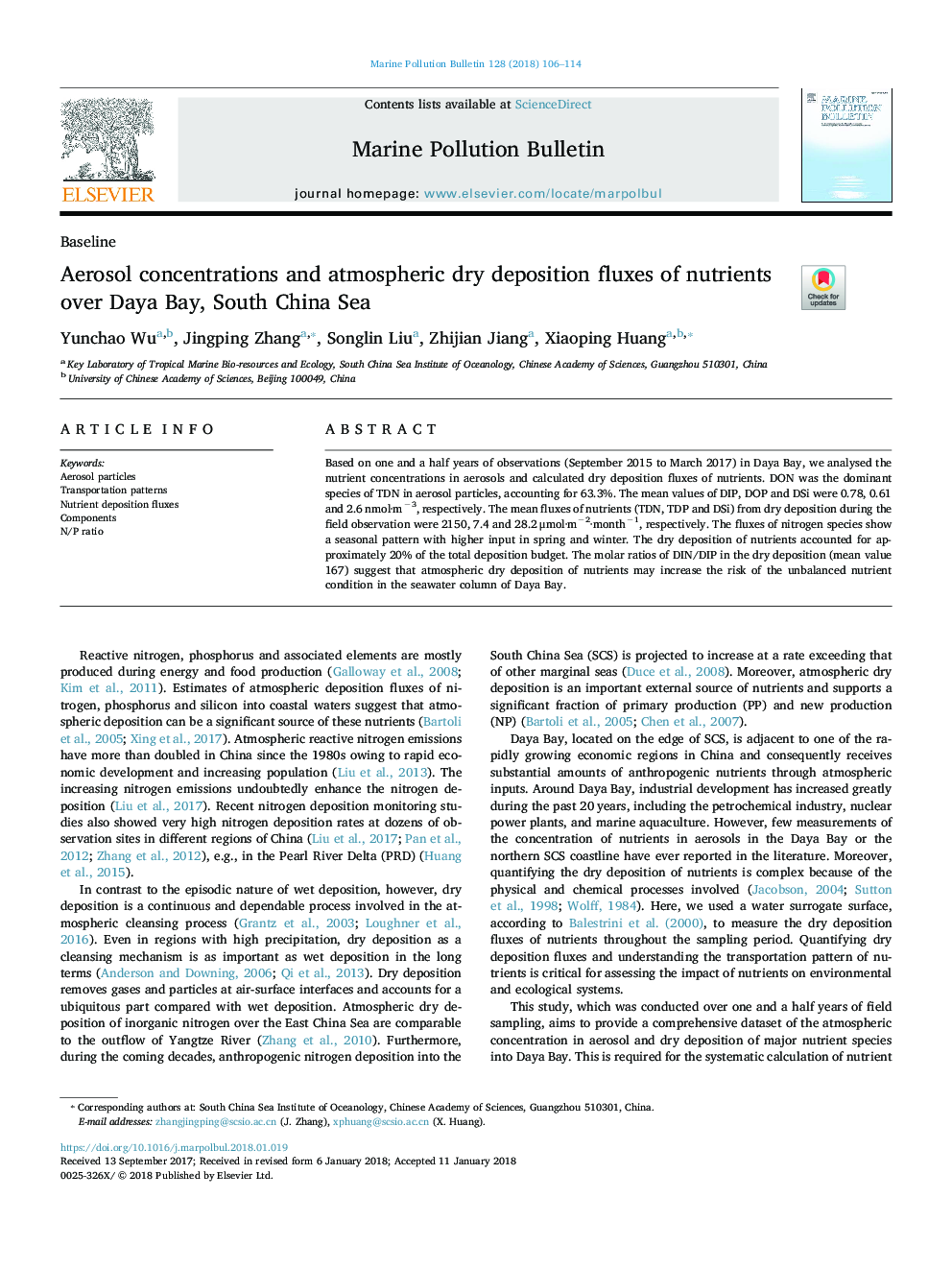| Article ID | Journal | Published Year | Pages | File Type |
|---|---|---|---|---|
| 8871891 | Marine Pollution Bulletin | 2018 | 9 Pages |
Abstract
Based on one and a half years of observations (September 2015 to March 2017) in Daya Bay, we analysed the nutrient concentrations in aerosols and calculated dry deposition fluxes of nutrients. DON was the dominant species of TDN in aerosol particles, accounting for 63.3%. The mean values of DIP, DOP and DSi were 0.78, 0.61 and 2.6â¯nmol·mâ3, respectively. The mean fluxes of nutrients (TDN, TDP and DSi) from dry deposition during the field observation were 2150, 7.4 and 28.2â¯Î¼mol·mâ2·monthâ1, respectively. The fluxes of nitrogen species show a seasonal pattern with higher input in spring and winter. The dry deposition of nutrients accounted for approximately 20% of the total deposition budget. The molar ratios of DIN/DIP in the dry deposition (mean value 167) suggest that atmospheric dry deposition of nutrients may increase the risk of the unbalanced nutrient condition in the seawater column of Daya Bay.
Keywords
Related Topics
Physical Sciences and Engineering
Earth and Planetary Sciences
Oceanography
Authors
Yunchao Wu, Jingping Zhang, Songlin Liu, Zhijian Jiang, Xiaoping Huang,
